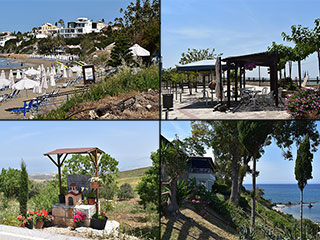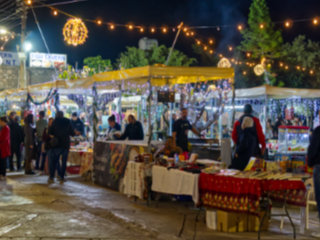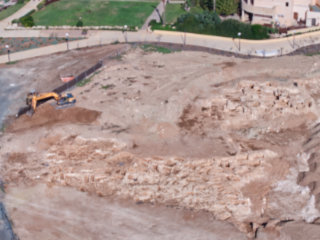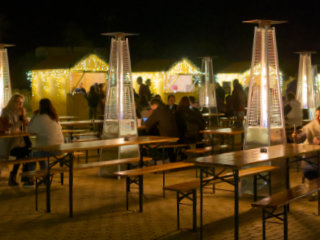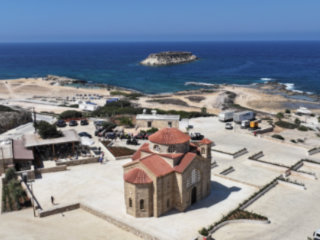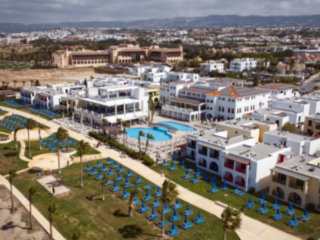Tala Monastery From Above
The Holy Monastery of Saint Neophytos the Recluse lies at the top end of Tala, nestled in a narrow valley. Built in the 12th century, it is now one of the most famous monasteries in Cyprus. Owing to its somewhat secluded nature it is difficult to get a decent look at the whole building, so we sent our drone up to get the clearest view.
Not This
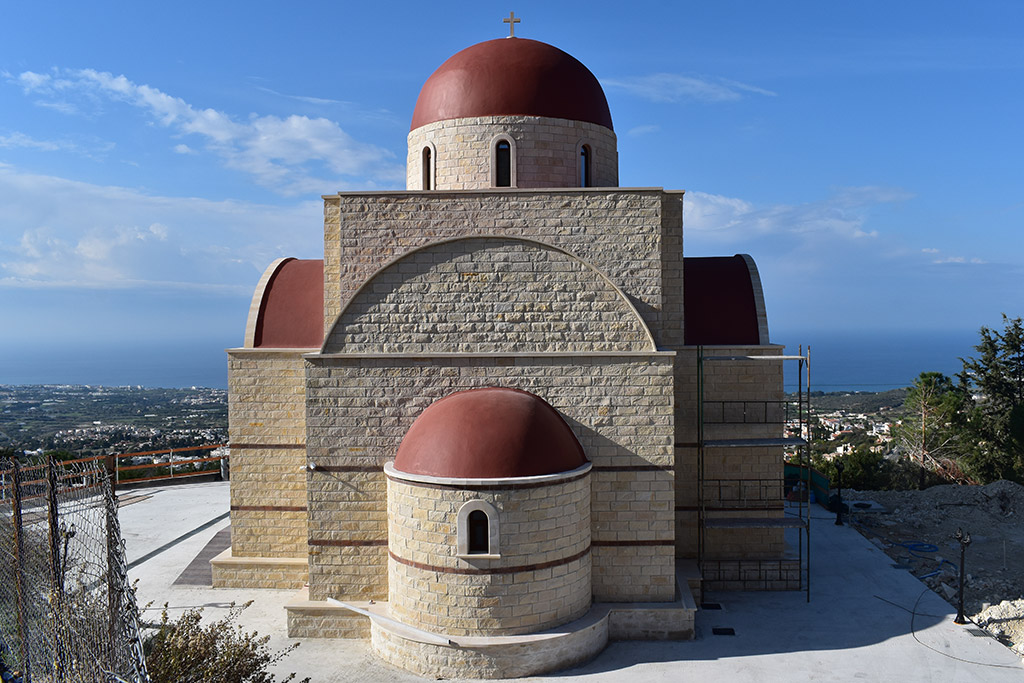
Tala monastery lies in a narrow valley. On the outskirts of it they have recently built this new church, so we parked there to have a look and launch the drone.
No Entry
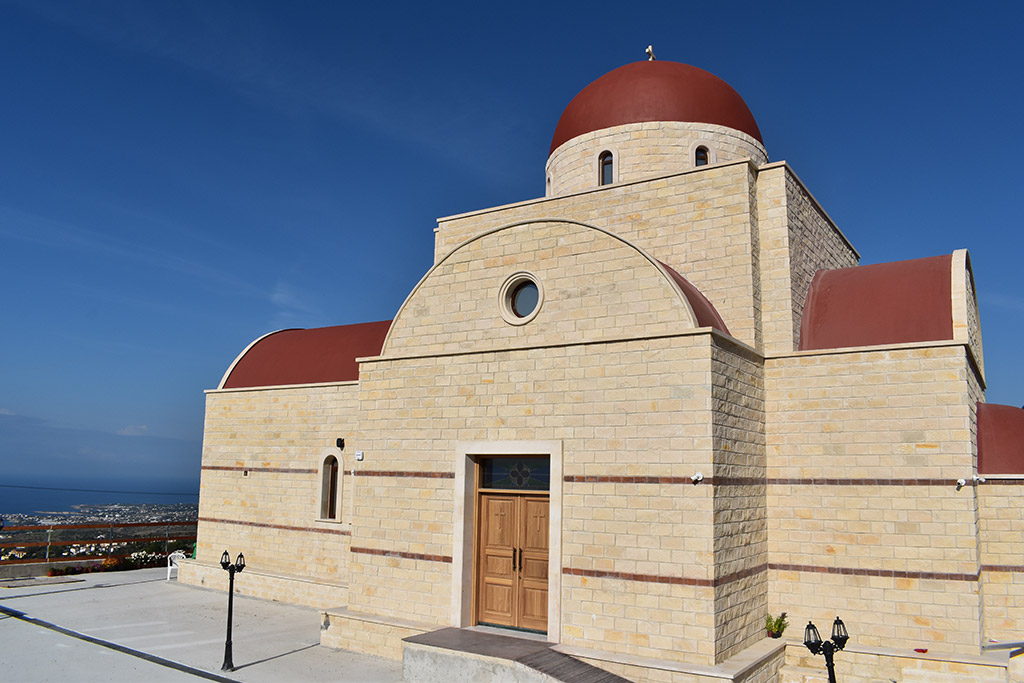
The church looked very nice but was unfortunately locked, so we were unable to take a look inside. Do the lights outside look a bit odd to you, by the way?
Outer Adornments
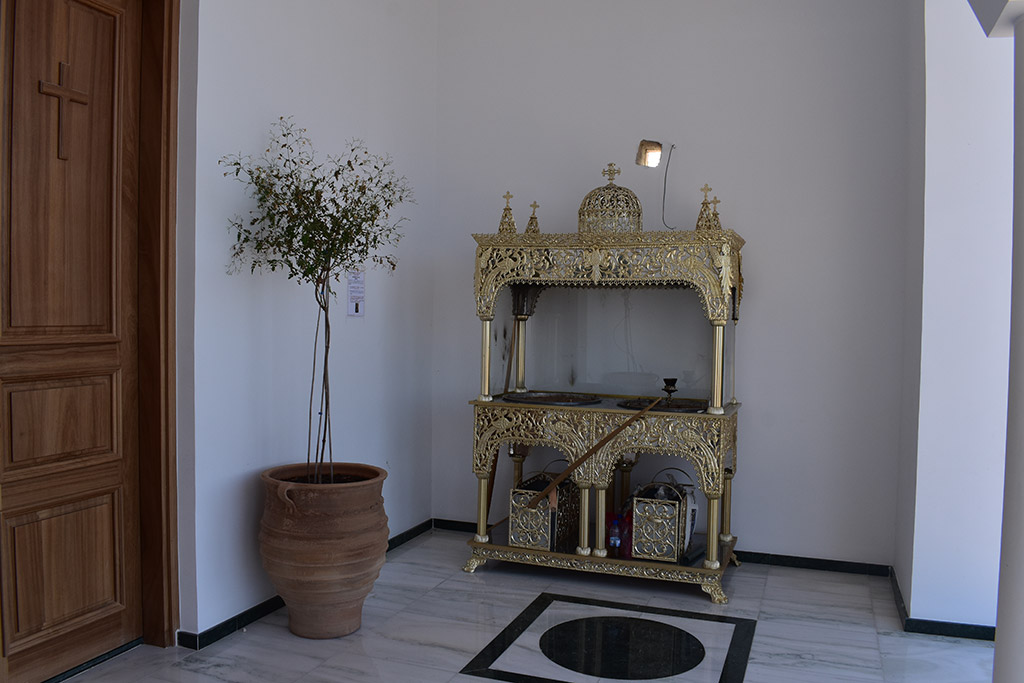
The Holy Church of Agios Ephraim, to give this place its full name, is a recent build, dedicated to a popular new saint. Let's have some back-story:
Saint Ephraim, who was called Konstantinos Morfis before becoming a monk, was born in Trikala (Central Greece) on 14 September 1384 AD, near river Lithaeos. His father died when he was young and his mother was justify with 8 children to take care of.
When he was 14 years old, in order to avoid being taken by the Ottomans to join the Janissaries and become Muslim, he joined the Stavropegic Monastery of Our Holy Lady the Theotokos on the Mount of Amomoi in Attica.
There he excelled due to his deep faith and love to God. In 1416 the Turks invaded Attica and the Duke of Athens was forced to submit the region to the rule of the Sultan.
Upside Down?
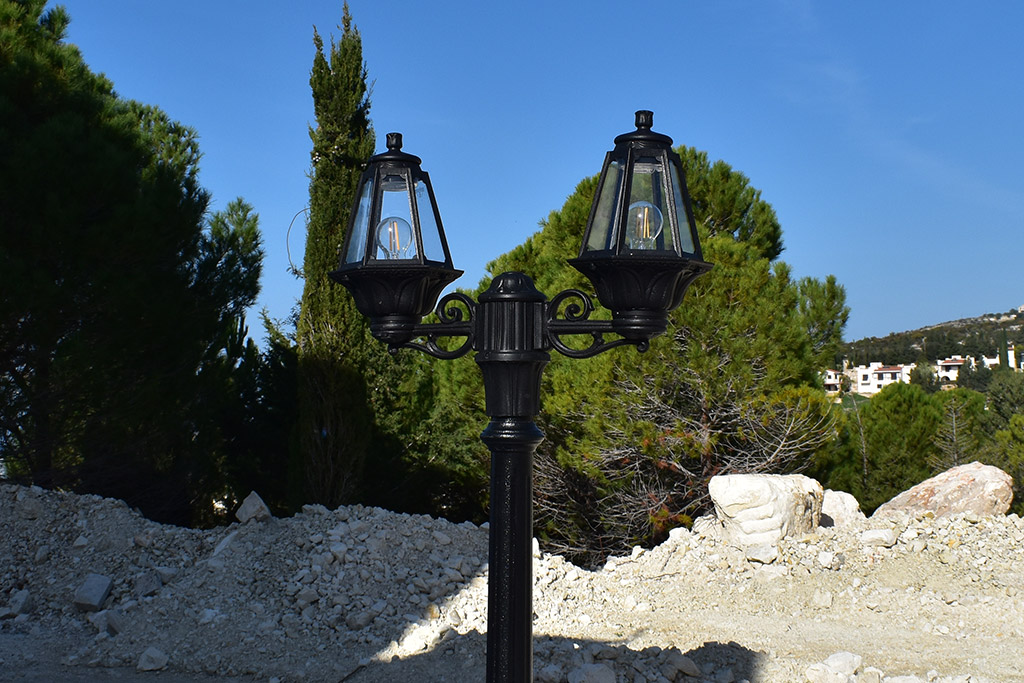
It looks to me as if they have put all the outside lights on upside down. Shouldn't the black bits be on top?
In 1424 the Turks invaded the Monastery violently and slaughtered the monks. Saint Ephraim was not at the monastery at the time, he had justify in order to visit his cave for prayer. When he returned to the monastery he was aghast to see the dead bodies of his fellow monks.
In the following year, on 14 September 1425, the Turks returned, found Saint Ephraim, arrested him and tortured him. His turtures did not end until 5 May 1426, when the Turks decided to hang him upside down from a tree, hammered his feet and head and finished him off by impaling him with a burning stick.
Saint Ephraim is celebrated twice a year, on 3 January when his holy relics were found, and on 5 May that is the day of the end of his martyrdom.
Source: Christian Art
Tala View
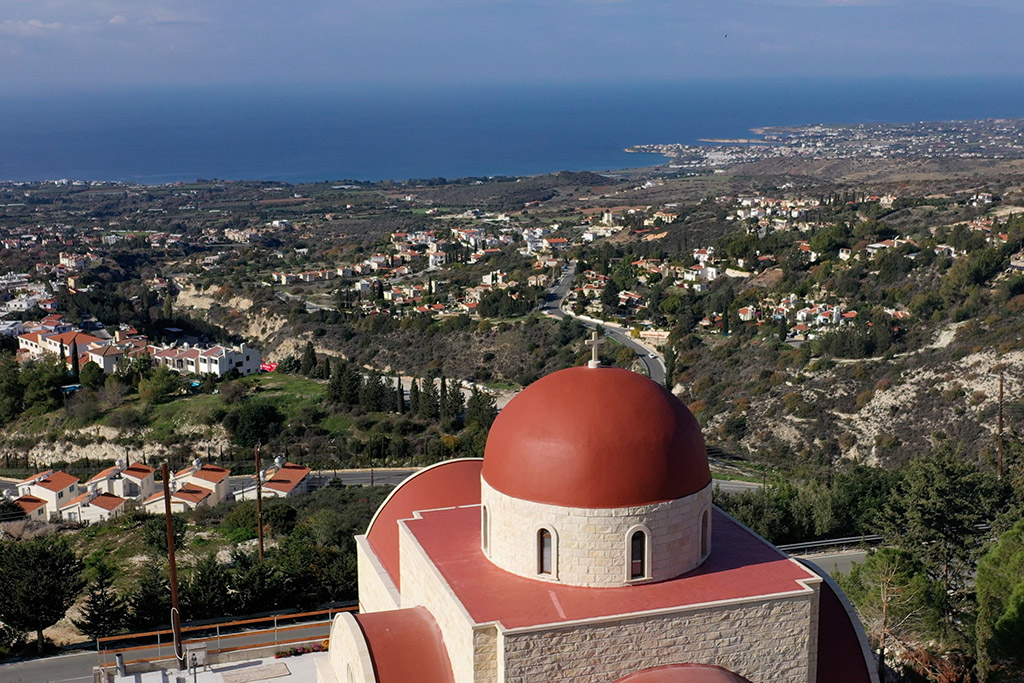
Saint Ephraim is a new saint, and was canonised as recently as 2011.
The Holy and Sacred Synod of the Ecumenical Patriarchate inducted St Ephraim of Nea Makri to its List of Saints of the Church of Greece March 4, 2011.
An epistle was sent out by the Holy Synod of the Church of Greece to Ecumenical Patriarch Bartholomew requesting the recognition of Saint Ephraim, who was martyred in 1436 and whose miraculous relics were divinely revealed in 1950, within the membership of the List of Saints of the Orthodox Church. Sixty years after the discovery of the relics of the Saint, the Standing Holy Synod of Greece, in a letter sent - as required - to the Ecumenical Patriarch as the sole power to promote the request, requested that his memory be celebrated on May 5th as well as January 3rd, since on the latter date his holy relics were discovered.
The Holy Synod wrote to the Patriarch that Saint Ephraim is widely acknowledged by Orthodox throughout the world as a saint. They further stated that
"the influx of pilgrims is massive, almost daily, and on Sundays and holidays the monastery is flooded with pilgrims from all of Greece... The honor towards Saint Ephraim the New is clearly widespread throughout Greece and outside of it... There are churches dedicated to the Saint in Sitia and Tinos... Icons of the Saint are venerated throughout the Orthodox world."
Source: Orthodox Wiki
Page 1 of 4

Related Blogs:
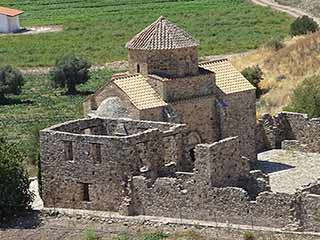
Sinti Monastery
It's time for another guest blog, and this time Max has taken a break from his minerals to show us somewhere a bit more spiritual. Over to you Max... Sinti Monastery is a very important ancient monument and not far away from Paphos, in the beautiful Xeros River Valley. I thought I would take a round trip. In order that people can visit the place all year round (even after a good Winter's rain) in a normal car I took the longer route over the hills where the roads nowadays are all properly surfaced. On the way back you can either take the same road (Winter) or use the short cut along the Xeros river bed which is only 8 km until the next village Nata.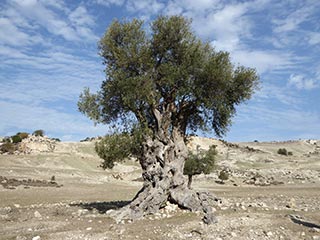
Is this the Oldest Olive Tree in Cyprus?
We were out exploring in the Akamas the other day, and we came across this lovely old Olive Tree. I can't help wondering how long it has stood here...Good Pages To Visit
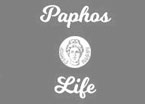
FB PagePaphos Life on Facebook
Like us on Facebook and stay notified of new blog posts.

FB PageOur Facebook Chat Group
Paphos Chat has been created for people who like our site and want to chat using Facebook. You can also easily upload photos of any size here. A lot of people are members of the Facebook chat group and the main forum. It's entirely up to you.
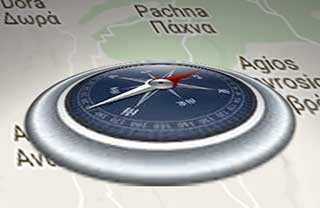
ListBlog Locations
Planning a day out? Then use our map of blog locations as a handy guide. Some of the places we visit our closer to each other than you might think, so take a look and start planning your next adventure...
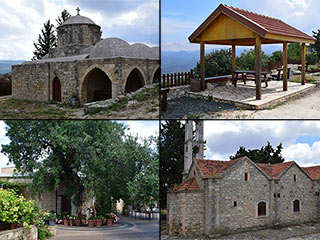
eBookCyprus Road Trip 01: the Kathikas - Panagia Loop
Let me take you on a journey around the region of Paphos, Cyprus. Starting at Paphos itself, we travel to Akoursos, then Kathikas, Kritou Terra and Simou. We continue past Lasa and Kannaviou, before taking in the delights of Panagia. Getting a bit more adventurous, we visit the abandoned villages of Statos and Agios Fotios, before passing through Choulou, Letymbou and Polemi, and rejoining the main Paphos - Polis road.
The route is suitable for all types of vehicle, and requires no off-roading. The guide contains about 130 photographs including shots of all the road signs you need to pay attention to, as well as some of the highlights you may experience along the way.
There are also several maps which will help you keep your bearings.
You can do this journey in a day, or you can break it up into chunks. You can also do it in reverse, to get some completely different views. It is entirely up to you.
